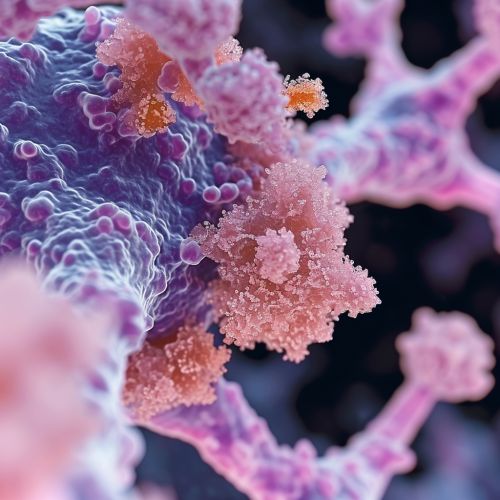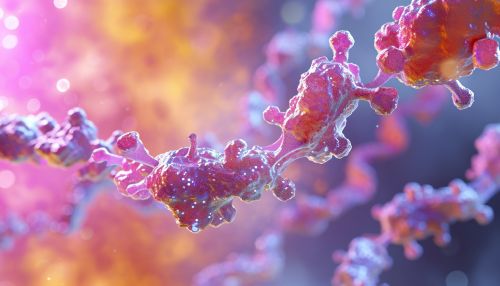JAK-STAT signaling pathway
Introduction
The JAK-STAT signaling pathway is a chain of interactions between proteins in a cell, and is involved in processes such as immunity, cell division, cell death, and tumor formation. The pathway communicates information from chemical signals outside of a cell to the cell nucleus, resulting in the activation of genes through a process called transcription. This pathway is integral to the proper functioning of the immune system and plays a critical role in the development of blood cells in mammals.
Components of the JAK-STAT Pathway
The JAK-STAT signaling pathway is composed of three main components: Janus kinases (JAKs), Signal Transducer and Activator of Transcription proteins (STATs), and receptors for various cytokines and growth factors.


Janus Kinases (JAKs)
Janus kinases are a family of intracellular, non-receptor tyrosine kinases that transduce cytokine-mediated signals via the JAK-STAT pathway. There are four known JAKs in mammals: JAK1, JAK2, JAK3, and TYK2. These kinases act as catalysts for the transfer of a phosphate group from ATP to tyrosine residues on certain proteins, which triggers a cascade of further protein-protein interactions within the cell.
Signal Transducer and Activator of Transcription Proteins (STATs)
Signal Transducer and Activator of Transcription proteins are a family of cytoplasmic proteins with Src homology-2 (SH2) domains. There are seven known STATs in mammals: STAT1, STAT2, STAT3, STAT4, STAT5A, STAT5B, and STAT6. These proteins function as both cytoplasmic signal transducers and nuclear transcription factors.
Cytokine and Growth Factor Receptors
The JAK-STAT pathway is initiated when a cytokine or growth factor binds to its corresponding receptor on the cell surface. This binding event triggers a conformational change in the receptor, which allows JAKs to phosphorylate and activate each other. The activated JAKs then phosphorylate the receptor, creating docking sites for STATs.
Activation of the JAK-STAT Pathway
The activation of the JAK-STAT pathway begins with the binding of a cytokine or growth factor to its corresponding receptor. This binding event leads to the activation of JAKs, which then phosphorylate tyrosine residues on the receptor. The phosphorylated receptor serves as a docking site for STATs, which are subsequently phosphorylated by JAKs. The phosphorylated STATs then form dimers and translocate to the cell nucleus, where they bind to specific DNA sequences and regulate gene transcription.
Role in Immunity and Disease
The JAK-STAT pathway plays a critical role in the immune system, particularly in the response to infection and inflammation. Dysregulation of this pathway has been implicated in various diseases, including immune disorders, cancers, and cardiovascular diseases.
Immune Response
The JAK-STAT pathway is crucial for the immune response to pathogens. It is involved in the activation and differentiation of immune cells, the production of cytokines and chemokines, and the regulation of immune responses.
Diseases
Dysregulation of the JAK-STAT pathway can lead to various diseases. For example, mutations in JAKs or STATs can result in immune disorders such as severe combined immunodeficiency (SCID) and hyper IgM syndrome. Additionally, aberrant activation of the JAK-STAT pathway has been implicated in the development of cancers, including leukemia and lymphoma.
Therapeutic Targeting of the JAK-STAT Pathway
Given its role in disease, the JAK-STAT pathway is a potential target for therapeutic intervention. Several drugs that inhibit JAKs have been developed and are currently in use or in clinical trials for the treatment of various diseases, including rheumatoid arthritis, psoriasis, and cancer.
